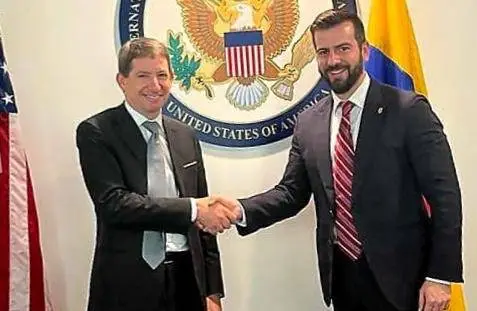In 2023, after the end of its agreement with the IMF, the Government will be forced to increase credits from multilateral organizations, such as the World Bank, the IDB and CAF.
Ecuador has a credit quota of $1.751 billion with multilateral organizations for 2023, and could require more, since by then the agreement with the International Monetary Fund (IMF) will have concluded.
Among the multilaterals that could lend money to Ecuador are the Inter-American Development Bank (IDB) and the Development Bank of Latin America (CAF).
However, Ecuador’s credit quota with the multilaterals in 2023 will be 62% lower than that of 2022 (because of the end of its IMF credit agreement).
The agreement with the IMF, signed in 2020 and renewed in September 2021, for $4.6 billion, ends in December 2022.
But the government has not yet confirmed whether it will ask the IMF for more money.
For the moment, and to compensate for the end of the IMF’s support, Finance Minister Pablo Arosemena has said that he will ask the World Bank, the IDB and the CAF to increase the financing planned for Ecuador in 2023.
The strategies
A first step is for the financing program that Ecuador has with the Fund to end successfully in December 2022.
This would mean that Ecuador would comply for the first time in its history with the goals and payments to the IMF. The country has had 21 agreements with the IMF since 1961.
According to the minister, meeting the pending goals with the IMF will send a message of confidence to multilateral organizations.
And so, a door is opened for them to increase the loans that Ecuador will need.
The second Finance strategy has been to hold dialogues and face-to-face meetings with representatives of multilateral organizations.
Arosemena already traveled to the United States in July to meet with representatives of other multilaterals. And he is currently planning a trip to Washington.
What will happen to the Fund?
Ecuador’s debt with the IMF totaled $6.0 billion thru the first half of 2022.
Former Finance Minister Mauricio Pozo, says that the government will need a new agreement with the IMF in 2023, even if it manages to obtain more resources from other multilaterals.
He believes the State will not be able to issue foreign debt bonds in 2023, because after the increase in the country risk indicator, it would have to pay interest rates that are too high.
Ecuador’s Country Risk closed at 1,543 points on September 8th, which means that if Ecuador were to issue bonds now it would have to pay an interest rate of 18% per year.
In the latest IMF report on Ecuador, the agency projected that the country could issue $1.5 billion in bonds in 2023.
Pozo explains that the recent visit of the IMF mission is a sign of the organization’s interest in continuing to work with Ecuador.
But the challenge in the dialogues with the Fund, adds Pozo, will be to agree on goals of structural reforms that manage to break the legislative blockade in the National Assembly.
Another issue on which it will be a challenge to reach agreements is the targeting of fuel subsidies, he adds.
Ecuador ‘s debt with multilateral organizations doubled between 2019 and 2022. Multilateral loans totaled $9.48 billion as of December 2019, and by the first half of 2022 they already amounted to $21.91 billion.


0 Comments